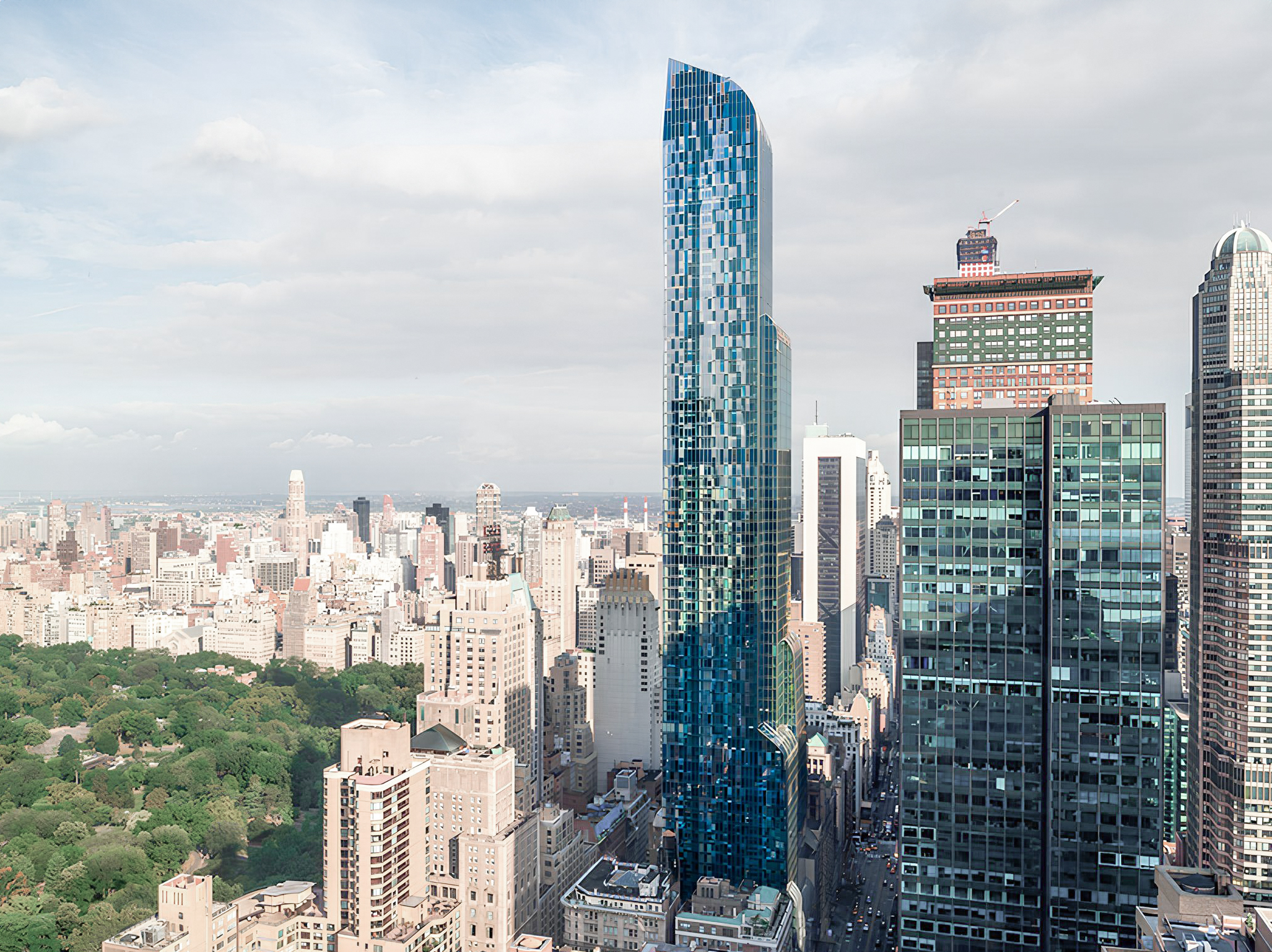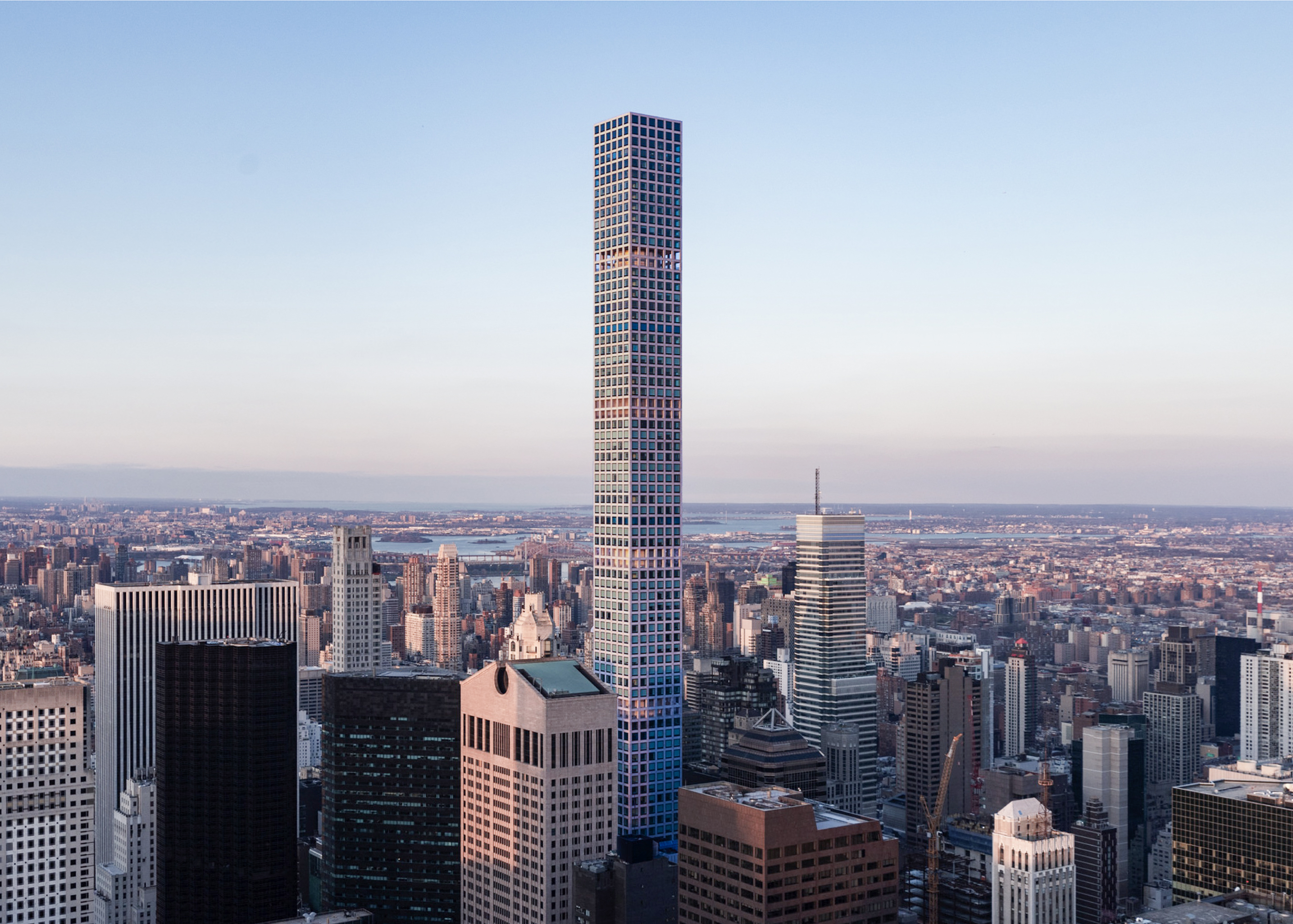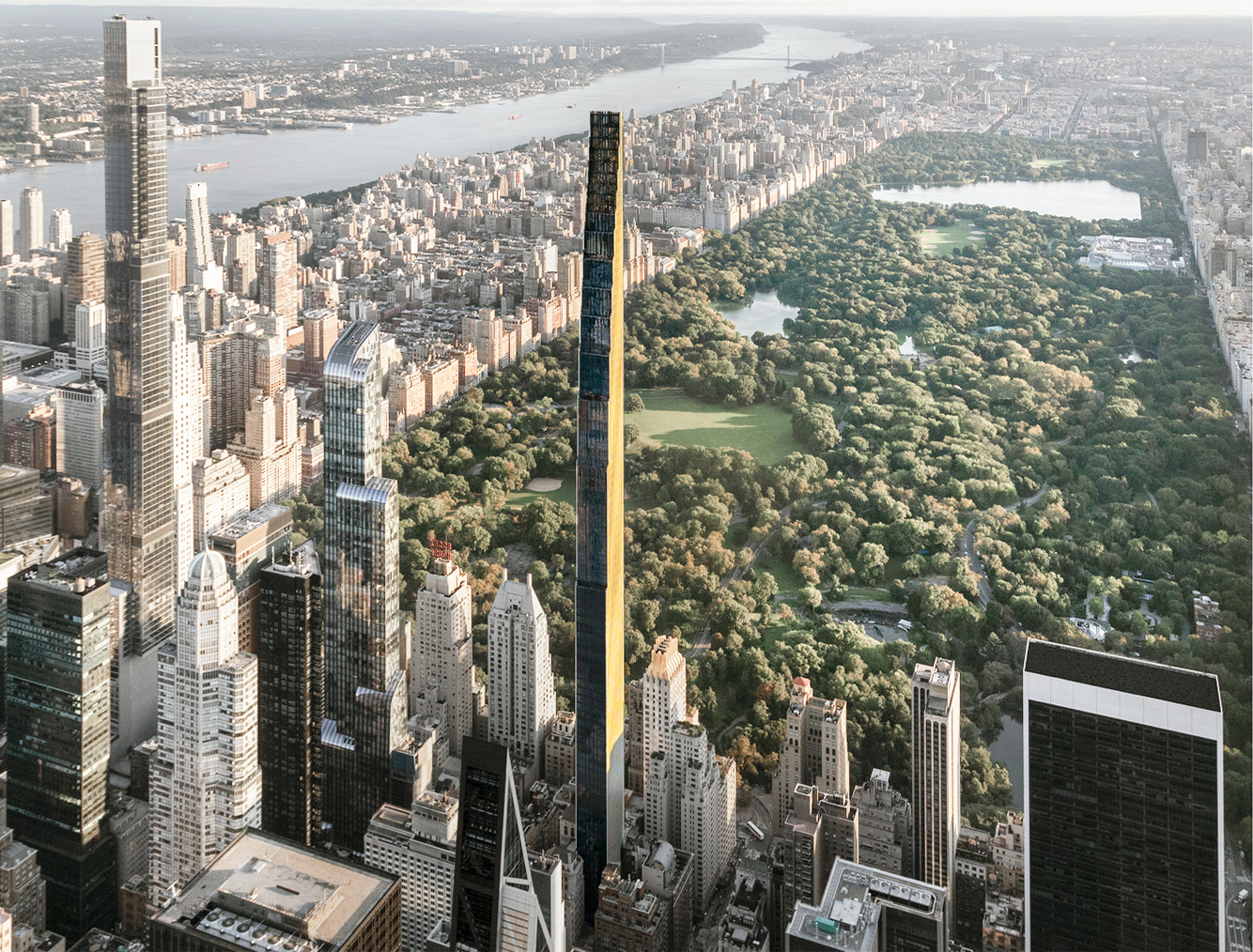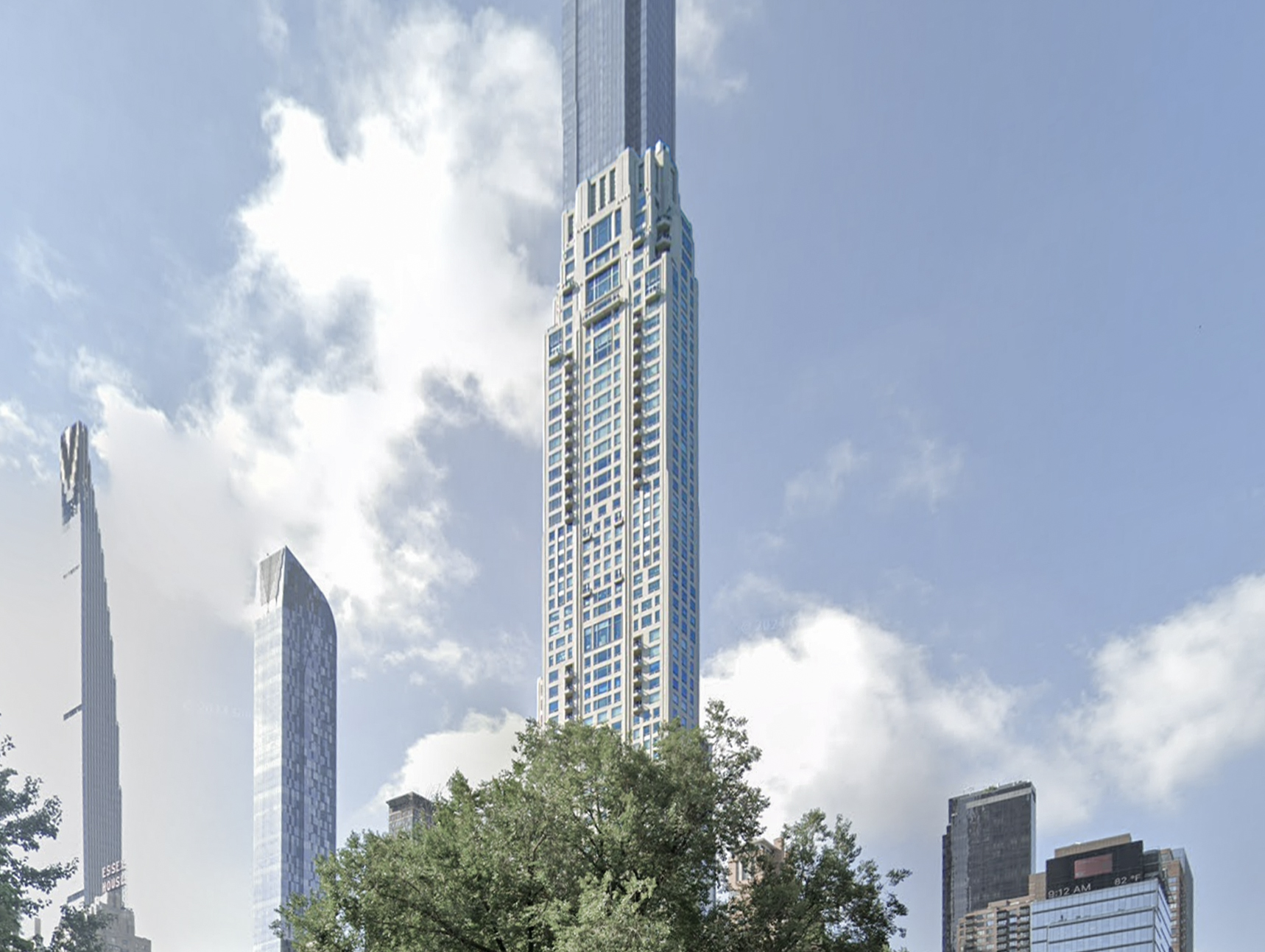How Billionaires’ Row came to be and what comes next for NYC's skyline

For a while there it seemed like NYC was going to attempt to freeze time and capitalize on the glory days of the past. But Billionaires's Row is one of several examples of how NYC has overcome that temptation and has let the imagination of developers, architects and engineers run wild once more.
Towering along 57th Street, these ultra-thin, impossibly tall skyscrapers reach for the skies while casting shadows over Central Park and making headlines across the globe. But what's more fascinating than arguments for or against these developments, is the story of how they came to be—a tale of zoning loopholes, engineering marvels, and the global chase for wealth.
But why 57th Street?
The emergence of Billionaires’ Row on 57th Street is no accident; it's the product of calculated strategy, geographic happenstance, and legal opportunity. While 59th Street faces Central Park directly and boasts some of Manhattan's oldest luxury properties, its co-ops and historic hotels are notoriously difficult to redevelop. One block south though, on 57th Street, that’s a different story, and one which offered a much more flexible canvas for developers.
Zoning laws on 57th street allowed what would have never been possible on 59th. And so the second South facade to Central Park was born
Zoning laws played a pivotal role. 57th Street sits in the Midtown Special Zoning District, a designation that encourages high-density, commercial, and mixed-use development. Its classification as a "wide street", which under New York's zoning code allowed for significantly taller buildings than neighboring "narrow streets." Developers exploited this, combining plots of land and purchasing air rights from adjacent low-rise buildings to create massive vertical allowances. The result? Towers that soar above their neighbors, uninterrupted, virtually creating a second front to Central Park, one that rises above the old construction on Central Park South (aka 59th street).
But 57th Street isn’t just the second row to Central Park. Developers made sure to market it in a way that made it even better than being right on the park’s edge. 57th Street is a nexus of cultural, commercial, and residential prestige: just steps from Fifth Avenue's luxury shopping, Central Park's greenery, and Midtown's corporate offices. For global billionaires, it's the ideal address, balancing convenience with exclusivity.
Billionaires' Row's identity is shaped by its architectural icons. One57 was the first to break ground in 2009. Completed in 2014, the building designed by Pritzker Prize winner Christian de Portzamparc, reached record-breaking sales—including a $100 million penthouse—which set the tone for what followed. At 1,005 fee, in 2014 One57 was seen as sky-high and hardly unsurpassable, yet less than a decade later it now seems like it belongs to a different time than the buildings that soon rose around it.
Not far behind came 432 Park Avenue, Rafael Viñoly's minimalist masterpiece. With its grid of windows and pencil-thin proportions, it became one of the tallest residential towers in the world. Residents enjoy uninterrupted views of Central Park and the Manhattan skyline—if they can tolerate occasional complaints of elevator malfunctions and unsettling sway in high winds.
Then there's 111 West 57th Street, or the Steinway Tower, designed by SHoP Architects. Its slender profile—so narrow it's nearly disorienting—epitomizes the technical prowess of these developments. At its peak, the tower rises 1,428 feet, a feat only made possible by the latest advancements in engineering and materials.
220 Central Park South, designed by Robert A.M. Stern, is perhaps the outlier among Billionaires’ Row’s super-tall towers. While it primarily sits on 58th Street, a smaller part of the project extends to Central Park South, giving it a rare facade directly on the park and the corresponding prestigious address. It is arguably the most successful of all the towers from a commercial standpoint—not only has it managed to hold its original listing prices, but it also houses the $238 million penthouse purchased by Ken Griffin, the most expensive home in U.S. history.
Finally, there's Central Park Tower, the tallest residential building in the world. Rising 1,550 feet, it pushes luxury to its extreme with amenities like a private club and multiple apartments in the $100 million dollars range, and a penthouse that hit the market at a quarter of a Billion dollars.
Billionaires' Row wasn't just built for New Yorkers though. Actually, it wasn't at all—it was designed for the global elite. Buyers hail from countries like China, Saudi Arabia, and Russia, viewing these properties as investments, status symbols, and safe havens for their wealth. Many of these apartments sit empty most of the year, bought not as homes but as financial instruments. The opaque nature of ownership, often funneled through shell companies, has drawn criticism and raised concerns about money laundering.
Most units are strategic investments from foreigners who rarely use them. This has gained these developments the nickname of "ghost towers"
This phenomenon gives rise to the nickname "ghost towers". While their presence looms large in the skyline, their impact on the fabric of the city feels minimal. Few lights are on at night; few residents engage with the neighborhood. For many New Yorkers, these buildings represent the city's growing alienation from its working and middle classes.
From a commercial perspective, Billionaires' Row has been both a triumph and a cautionary tale. On the one hand, it delivered record-breaking sales and solidified Manhattan as a hub for global wealth. On the other hand, many units languished on the market for years. Developers overestimated demand for ultra-luxury apartments and failed to understand the psyche of multimillion-dollar buyers. In a world where egos are just as high as the buildings they inhabit, no multimillionaire wanted to be below others, and they definitely didn’t want to spend that kind of money and not have a view of Central Park. This means that for a while the market was flooded with these types of units, forcing price cuts.
Billionaires' Row set some record-breaking sales, but selling some of the lower units proved to be a real challenge for developers
Even for those who bought in, the dream hasn't always lived up to reality. Complaints of construction flaws and high maintenance fees have surfaced, tarnishing the Row's polished image. Despite this, the sheer audacity of these buildings continues to draw fascination and headlines.
Billionaires’ Row has forever changed New York City’s skyline, but it’s also left an indelible mark on its culture and politics. The shadows these skyscrapers cast over Central Park have become a literal and metaphorical flashpoint, symbolizing the broader inequalities that divide the city. Critics argue that these towers—while marvels of engineering—do little to serve the city’s residents, fueling resentment over the prioritization of global wealth over local needs.
Looking ahead, the future of Billionaires’ Row is uncertain, though not without possibilities. Developers have aggressively purchased air rights over the years to create the current towers, but by doing so they have also consumed a big part of the rights available. Some smaller parcels or overlooked properties may still exist, but developing them would likely require creative deals, mergers, and navigating legal hurdles.
The scarcity of air rights left to purchase, together with the collective pushback against these types of developments and the challenge of selling them fully make it unlikely that this "row" will keep growing
Existing buildings on 57th Street present another challenge. Much of the block is now occupied by either iconic structures or new luxury towers, making redevelopment difficult. Replacing these structures would mean buying out current owners, overcoming financial obstacles, and facing potential public resistance—especially in an era where large-scale luxury projects face increased scrutiny.
Zoning laws, while still favorable for supertall developments, might not remain static. Political pressures to reform zoning policies and address inequality could limit future projects.
Meanwhile, developers are already eyeing alternative areas. Adjacent streets, or entirely new neighborhoods like Hudson Yards, may become the focus of luxury expansion. These areas reflect a diversification of New York’s real estate ambitions and suggest that while the evolution of Billionaires’ Row itself might slow down, its essence will live on. The towers have set a new standard for audacity and ambition, and as long as the world’s wealthiest continue to gravitate toward New York City, the spirit of the Row will endure—whether in its current footprint or beyond.
In the end, Billionaires’ Row is both a triumph of ambition and a stark reminder of who, and what, shapes our cities. It also raises a question that only time has the answer for: Can a city like New York remain a place for everyone, or will its glittering skyline be its ultimate divide?
About the author
Founder of WikiArquitectura.com. Over the past 20 years I've explored and documented architectural marvels around the world. With visits to over 300 significant buildings in 25 countries, I combine first hand experience with in-depth study to share insights into global architectural practices.




